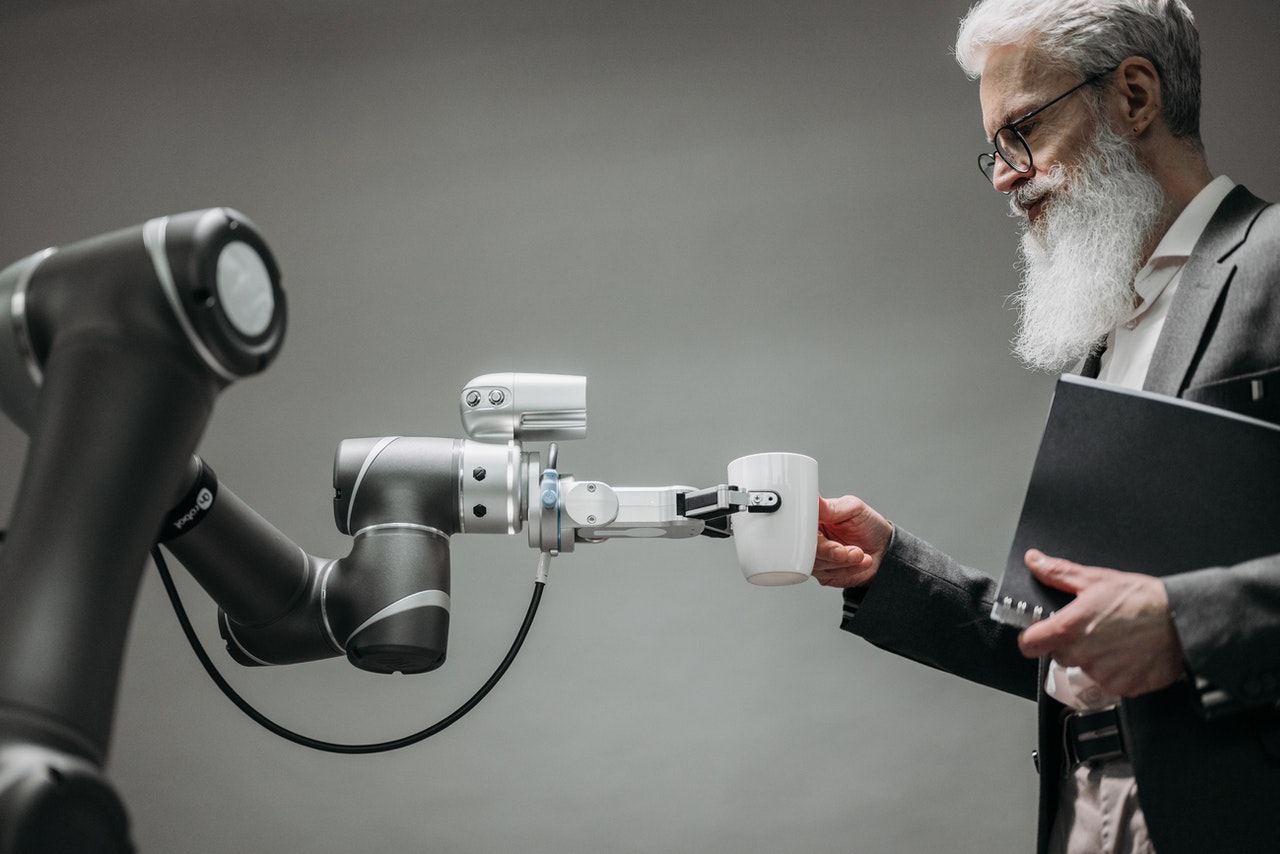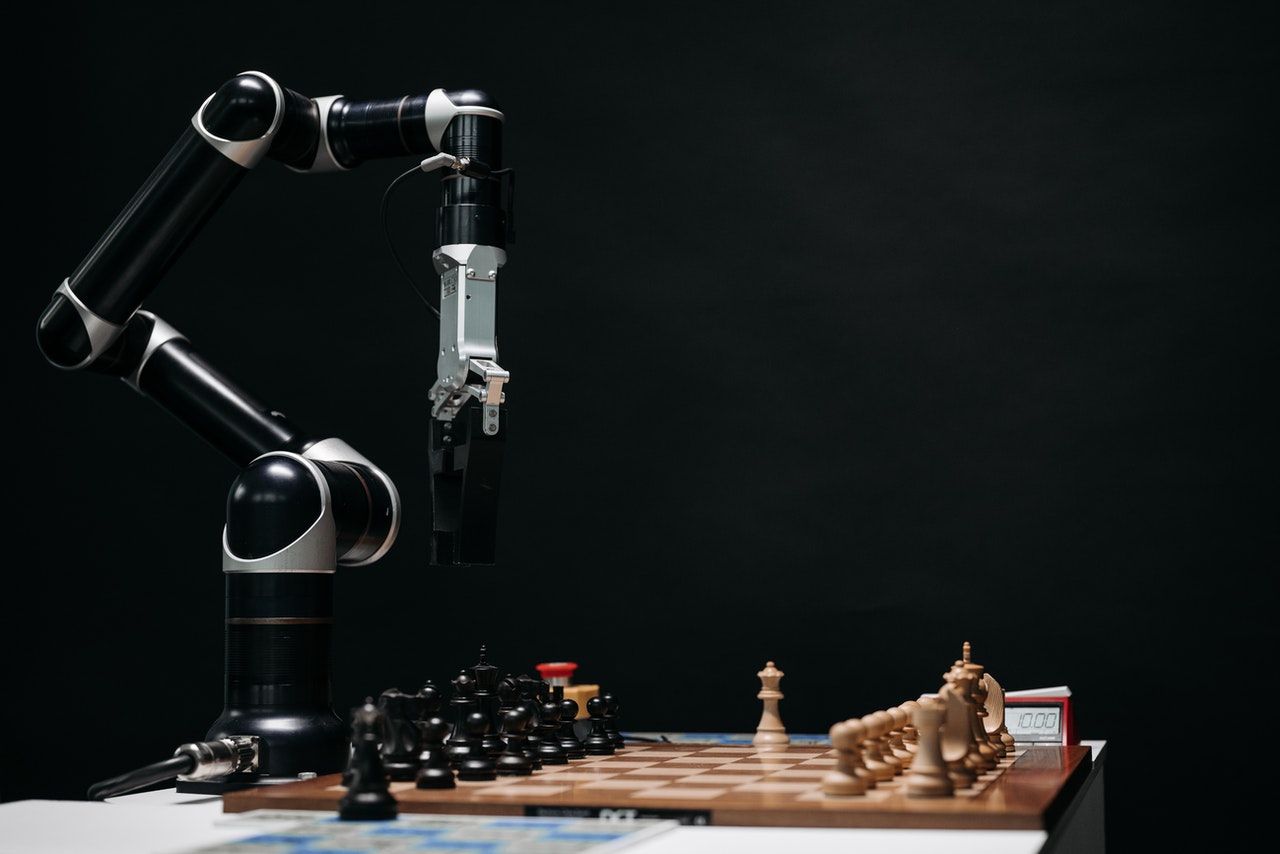A cobot, an alternative name for a collaborative robot, is a type of robot that is programmed to interact with human beings in a common area.
They are different from robotic arms since they work around human beings and robotic arms are separated from them. They are manufactured with light materials and have a controlled speed and force for them to be safe around humans.
Cobots can perform simple human duties as well as complex operations, but not as complex as those in industries.
History Behind Cobots
The invention of cobots is dated in 1996 by two professors namely J. Edward Colgate and Michael Peshkin from Northwestern University. The aim behind their invention was to create a robotic machine that would physically interact with humans.
 In 1995, the General Motors Foundation was granted a lease to find ways in which robots can safely operate around human beings. This opened a platform for robotic companies to research and create these human-safe robots that can be used in everyday life.
In 1995, the General Motors Foundation was granted a lease to find ways in which robots can safely operate around human beings. This opened a platform for robotic companies to research and create these human-safe robots that can be used in everyday life.
The first cobot was created in such a way that its operations were controlled by the user and controlled by its internal motive. It was invented in regards to performing just like a human laborer. With time, the cobots were provided limited motives for the purpose of decision-making.
Colgate and Peshkin later built an organization called the Cobotics in the year 1997. The Cobotics manufactured several cobotic robots that were used in automobile assembly.
The first robot to be released to the public is called KUKA in the year 2004. It was controlled by the computer. It was later refurbished and the KUKA LBR 4 was released in the year 2008 and the KUKA LBR was released in the year 2013.
A number of cobots have then been released over a period of time to date with various cobot manufacturing companies. There is a Danish robotics company called Universal Robots that manufactures and sells robots including cobots.
Benefits of Cobots
Having learned about the history of collaborative robots, we can deduce that it has advantages to it. This is because they provide easy access to manufacturing and production processes through easy automation.
They are also designed to work safely with human beings hence very useful and comfortable for them. Cobots are beneficial to industries and manufacturers in the following ways:
- They are cost-friendly in that they are cheap in orientation and management unlike the employment of humans who require supervision.
- They are safe and can be used in a human environment.
- They are flexible and can be set up in any environment such as home, health care, manufacturing, and industrial sectors.
- They are small in size and therefore reduce workspace and can be used in small and medium-sized enterprises.
- The cobots are easy to program, unlike ordinary robots that require complex programs for them to operate. This is because they use user-friendly programs and do not perform complex tasks.
- The installation process is faster than other ordinary robots since they take a short time to set up and run. It can also perform its functions in a short period of time.
- They are more accurate than human beings since they perform repetitive tasks as programmed by their software. The cobots have an accuracy of 0.1 mm in their work.
Features of A Cobot
The main feature of collaborative robots is that they are designed to work together with humans. They are also lightweight and can be moved from one place to another. This makes them easy to use and implement in manufacturing industries.
 Apart from their adaptability, the collaborative robots have programs that automate their operations. To provide its services, a cobot is programmed to have the following additional features:
Apart from their adaptability, the collaborative robots have programs that automate their operations. To provide its services, a cobot is programmed to have the following additional features:
- Built-in vision system: A cobot is manufactured with robot vision that enables it to “see”, understand and analyze visual data as prompted by the user.
- Item detection: The cobot is able to detect and identify objects in its environment.
- Image improvement: This feature enables it to enhance an image so that it is suitable and visible to the user.
- Landmark recognition: The cobot can scan a landmark and analyze the objects in their current location without re-adjustment.
Applications of Cobots
Since we have mentioned that cobots are used in various sectors, they are set to perform the work that they are programmed for. Up to date, 50,000 collaborative robots have been sold around the world and used by manufacturers for their advantages.
They are mostly preferred over industrial robots because they are lightweight and they can operate next to human beings. They are used to increase the industries’ productivity locally and internationally as well as improve the product quality.
Just like industrial robots, they perform the following functions:
- Material welding: The cobots can fuse materials together such as plastic and metal to form products.
- Assembly: The cobot sets up or combines parts that make up a device and make it a single entity.
- Dispensing: The cobots dispense materials such as plastic into the specified size and quantity.
- Material handling is where the cobot picks and places materials into or on their obligated destination.
- Quality inspection: The cobots are used to check the quality of products since they are programmed to produce good quality products.
- Machine tending: The cobots are used to ensure that the other machines are running smoothly and well maintained. If there is any technical malfunction, it is reported and repaired.
Conclusion
Cobots are robots that are designed to interact with humans, hence they are safe for them. They can be used in a number of sectors such as homes, industries, and small to medium-sized businesses.
They are also very beneficial to industries in that they are cost-effective, fast, and are error-free. They are also applicable in these sectors and are used to inspect the quality of goods, removal of materials, assembly, and many others. Cobots are available in the cobot manufacturing industries and online platforms that sell them.

The Ideas Plus Business Editorial team is responsible for this post. For collaborations and partnership requests, kindly send an email to the Editorial Team at ideasplusbusiness[at]gmail[dot]com for the terms and conditions. You can also follow IdeasPlusBusiness.com on Twitter here and like our page on Facebook here.

